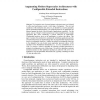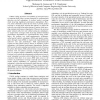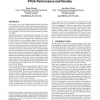15 search results - page 3 / 3 » When FPGAs are better at floating-point than microprocessors |
IPPS
2000
IEEE
13 years 9 months ago
2000
IEEE
The instruction sets of general-purpose microprocessors are designed to offer good performance across a wide range of programs. The size and complexity of the instruction sets, how...
ISCA
2003
IEEE
13 years 10 months ago
2003
IEEE
This paper describes the polymorphous TRIPS architecture which can be configured for different granularities and types of parallelism. TRIPS contains mechanisms that enable the p...
ISCA
2005
IEEE
13 years 11 months ago
2005
IEEE
CMOS scaling increases susceptibility of microprocessors to transient faults. Most current proposals for transient-fault detection use full redundancy to achieve perfect coverage ...
FPGA
2000
ACM
13 years 9 months ago
2000
ACM
In this paper we revisit the FPGA architectural issue of the effect of logic block functionality on FPGA performance and density. In particular, in the context of lookup table, cl...
CF
2005
ACM
13 years 7 months ago
2005
ACM
Data-driven array architectures seem to be important alternatives for coarse-grained reconfigurable computing platforms. Their use has provided performance improvements over micro...



